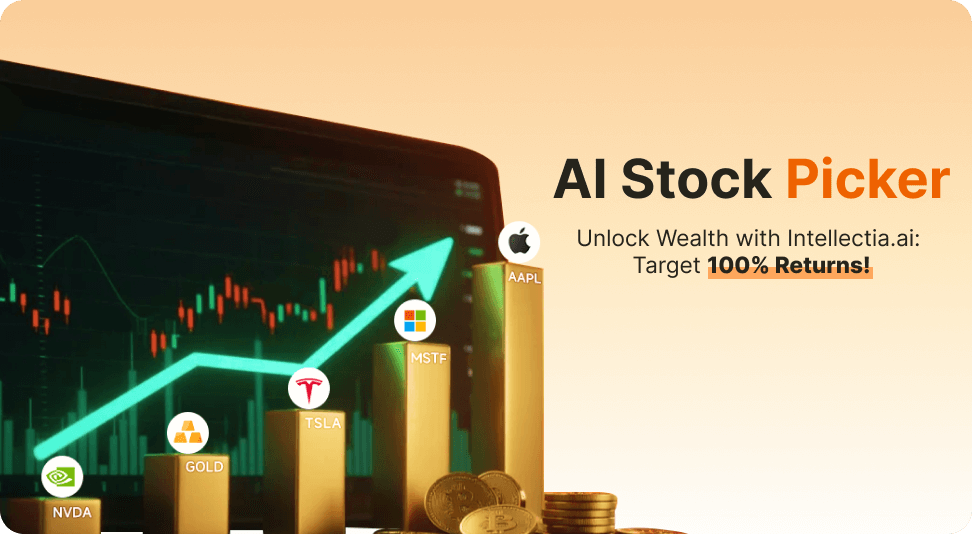Key Takeaways
- Small-cap ETFs provide exposure to high-growth potential companies, though they carry higher risk due to volatility.
- Current market conditions, including attractive valuations and expected earnings growth, favor small-cap stocks in 2025.
- Selecting the right small-cap ETF involves evaluating expense ratios, assets under management (AUM), performance history, and investment strategy.
- Top picks include VBK, ISCG, AVUV, SCHA, DFAS, XSMO, and SGDJ, each tailored to different investor preferences, from growth to sector-specific exposure.
Introduction
Ever wonder why some investors chase smaller companies when giants like Apple grab the spotlight? Small-cap ETFs focus on companies valued between $300 million and $2 billion, offering a shot at explosive growth. These firms often innovate faster than larger peers, but picking individual stocks can be a gamble due to volatility.
Small-cap ETFs solve this by spreading your investment across many companies, balancing risk while keeping the growth potential. With 2025 shaping up as a strong year for small caps, now’s the time to explore these funds. Let’s dive into what makes them tick, why now’s a good time to invest, and which ones stand out.
What Are Small Cap ETFs?
Small-cap ETFs are exchange-traded funds that invest in companies with market caps typically between $300 million and $2 billion. They track indices like the Russell 2000 or CRSP US Small Cap, giving you exposure to a broad range of smaller firms. Unlike mid-cap ETFs (firms valued $2 billion to $10 billion) or large-cap ETFs (over $10 billion), small-cap ETFs focus on companies with higher growth potential but also more volatility.

This makes them riskier than large-cap funds like those tracking the S&P 500, but their diversification reduces the risk of betting on a single stock. For more on ETF analysis, check Intellectia.AI’s stock monitor.
Why Invest in Small Cap ETFs Now?
Small-cap stocks are poised for a breakout in 2025, and here’s why you should care. First, they’re trading at lower valuations than large caps, making them a bargain. With the federal funds rate at 4.25%-4.5% as of May 2025, expected rate cuts could lower borrowing costs for small caps, which often rely on debt. A BNP Paribas report predicts 42% earnings growth for small caps in 2025, outpacing large caps.
Adding small-cap ETFs to your portfolio also boosts diversification, as their performance often zigzags differently from large caps. They give you access to emerging sectors like tech or green energy, where small companies often lead innovation. But beware: small caps are more volatile and sensitive to economic shifts, so you’ll need to stomach some ups and downs. For real-time market insights, try Intellectia.AI’s news page.

Source: BNP Paribas
Criteria for Selecting the Best Small Cap ETFs
Picking the right small-cap ETF isn’t just about chasing returns. Look at historical performance to gauge consistency, but also check volatility to understand risk.
Expense ratios matter—lower fees mean more of your money stays invested. Fund size and liquidity are key; larger funds with higher trading volumes are easier to buy and sell. Diversification across sectors or regions reduces risk, while the index methodology (growth, value, or blended) should align with your strategy.
Most small-cap ETFs focus on U.S. companies, but some include international exposure for added diversity.
For help screening ETFs, explore Intellectia.AI’s AI screener.


Source: Intellectia.AI
Best Small Cap ETFs
Ready to pick a small-cap ETF? Below is a detailed look at the best small-cap ETFs for 2025, each offering unique advantages based on your investment style. This comparative table summarizes key metrics, followed by in-depth profiles of each fund, including performance data, holdings, and why they’re top picks.
| ETF Name | Ticker | Expense Ratio | AUM | 3-Year Total Return |
| Vanguard Small-Cap Growth ETF | VBK | 0.07% | $33B | 30% |
| iShares Morningstar Small-Cap Growth ETF | ISCG | 0.06% | $645M | 31% |
| Avantis U.S. Small Cap Value ETF | AVUV | 0.25% | $15B | 26% |
| Schwab U.S. Small-Cap ETF | SCHA | 0.04% | $16B | 22% |
| Dimensional U.S. Small Cap ETF | DFAS | 0.27% | $10B | 25% |
| Invesco S&P SmallCap Momentum ETF | XSMO | 0.39% | $1.5B | 46% |
| Sprott Junior Gold Miners ETF | SGDJ | 0.50% | $162M | 49% |
Vanguard Small-Cap Growth ETF (VBK)
VBK tracks the CRSP US Small Cap Growth Index, focusing on small-cap companies with strong growth prospects. Its top holdings include innovative firms like Enphase Energy and Crocs Inc., which thrive in sectors like renewable energy and consumer goods.
With a 5-year price return of 50% as of May 2025, VBK offers steady performance. Its ultra-low expense ratio of 0.07% and massive $33 billion AUM make it a cost-effective, liquid choice. VBK is ideal for investors seeking growth with the stability of a well-established fund from Vanguard, a trusted name in ETFs.

Source: Intellectia.AI
iShares Morningstar Small-Cap Growth ETF (ISCG)
ISCG tracks the Morningstar US Small Cap Broad Growth Extended Index, holding nearly 1,000 growth-oriented small-cap stocks. Its diverse portfolio spans technology, healthcare, and consumer discretionary sectors, reducing company-specific risk.
ISCG posted a 5-year price return of 47% as of May 2025. With a rock-bottom expense ratio of 0.06%, it’s one of the cheapest options, though its $645 million AUM suggests slightly lower liquidity. ISCG suits investors prioritizing growth and low costs.

Source: Intellectia.AI
Avantis U.S. Small Cap Value ETF (AVUV)
AVUV is actively managed, selecting small-cap value stocks based on profitability and other fundamentals. Its holdings lean toward financials, industrials, and energy, offering exposure to undervalued companies.
AVUV delivered a 5-year price return of 176% as of May 2025. With a 0.25% expense ratio and $15 billion AUM, it balances cost and scale. AVUV is perfect for value investors who want active management without sky-high fees.

Source: Intellectia.AI
Schwab U.S. Small-Cap ETF (SCHA)
SCHA tracks the Dow Jones U.S. Small-Cap Total Stock Market Index, covering over 1,700 stocks for broad exposure. Its holdings span technology, healthcare, and industrials, ensuring diversification.
SCHA’s 5-year return was 83% as of May 2025, reflecting conservative performance. Its 0.04% expense ratio is the lowest here, and its $16 billion AUM ensures high liquidity. SCHA is ideal for cost-conscious investors seeking a broad, low-risk small-cap ETF.

Source: Intellectia.AI
Dimensional U.S. Small Cap ETF (DFAS)
DFAS is actively managed, using a factor-based approach that emphasizes profitability and market-cap weighting. Its diverse holdings include small caps across multiple sectors, delivering a 3-year price return of 13.7% as of May 2025.
With a 0.27% expense ratio and $10 billion AUM, DFAS offers a balanced strategy for risk-adjusted returns. It’s a great pick for investors seeking a middle ground between growth and value.

Source: Intellectia.AI
Invesco S&P SmallCap Momentum ETF (XSMO)
XSMO tracks the S&P SmallCap 600 Momentum Index, targeting about 120 small-cap stocks with strong price momentum. Its holdings focus on high-flyers in technology and consumer discretionary.
XSMO led with a 117% 5-year price return as of May 2025. Its 0.39% expense ratio is higher, and its $1.5 billion AUM suggests moderate liquidity. XSMO is ideal for investors betting on momentum-driven gains.

Source: Intellectia.AI
Sprott Junior Gold Miners ETF (SGDJ)
SGDJ tracks the Solactive Junior Gold Miners Custom Factors Index, focusing on small-cap gold mining companies. Its holdings, with market caps between $200 million and $2 billion, have benefited from rising gold prices, delivering a stellar 67% 5-year price return as of May 2025.
Its 0.50% expense ratio is the highest, and its $162 million AUM indicates lower liquidity. SGDJ suits investors bullish on gold but willing to accept sector-specific risks.

Source: Intellectia.AI
Conclusion
Small-cap ETFs are a fantastic way to tap into the growth potential of smaller companies while spreading risk across a diversified portfolio. With 2025 offering attractive valuations and strong earnings forecasts, funds like VBK, SCHA, and SGDJ cater to different strategies—growth, value, or sector-specific. Consider expense ratios, AUM, and your risk tolerance when choosing. For smarter investing, use Intellectia.AI to get AI-driven stock picks, trading signals, and market analysis tailored to your needs.











